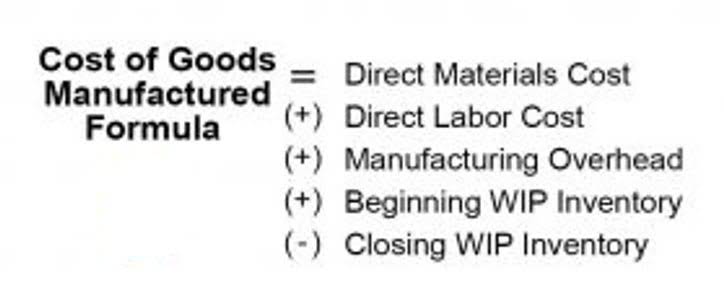
Effective communication strategies are key to maintaining a strong partnership with clients. Consulting firms often implement regular reporting systems to keep clients informed on how retainer fees are being allocated. This can involve itemized billing statements and meetings to discuss ongoing work and any adjustments needed. Consulting firms must ensure meticulous record-keeping for retainer fees to maintain accurate financial reporting and compliance. This involves recording the retainer fees as liabilities, managing the retainer balances effectively, and performing regular reconciliation.
- Once the expected hours are calculated, the next step is to determine the hourly rate.
- In this example, the small business pays a total of R6,500 per month for basic bookkeeping, tax preparation, and financial consulting services.
- Once the retainer fee is paid, the lawyer can protect the client from unforeseen circumstances during or before the business transactions.
- When you make that type of deposit, you will secure it as a prepaid expense on the balance sheet.
- Clients, on the other hand, may be able to deduct retainer fees as a business expense, provided the services are directly related to their business operations.
- This approach ensures that funds are allocated specifically for legal services and not used prematurely.
Earned retainer fees
- Some accountants offer services on a monthly retainer basis, especially for ongoing accounting and bookkeeping needs.
- A retainer in accounting is the client’s advance payment for professional accounting services.
- On the balance sheet, retainer fees initially appear as a liability, reflecting the company’s obligation to provide future services.
- If a lawyer sends a retainer invoice, it’s because they’ve had a meeting with the client about a case, and everyone is ready to get going with the work.
- The process ensures that the company’s earnings are reflected accurately during the period in which the work is performed.
- My site utilizes a unique process that leverages AI and human subject matter expertise to create the best content possible.
If you’re drafting a will, a flat fee may hold significant advantages because that pricing structure may help you appeal to more clients. For consistent and predictable legal work, flat fees can make sense for lawyers to use because a guaranteed price appeals to clients. Uncontested divorces, mortgage foreclosures, and DUIs are all areas where flat fees are commonly used. For small businesses, the decision between outsourcing and in-house bookkeeping often comes down to cost and specific needs.

Percentage of Revenue
You can income statement hold funds in a retainer account to pay your expenses as you incur them during the project. Payments for retainers can be recurring, such as monthly or quarterly for the duration of a project, or for continuing service, such as payments to retain a lawyer. Retainer fees offer a level of stability and predictability that can be crucial for the success of small, independent businesses. Retainer fees add to the business’s positive cash flow and the more retainer fees there are, the more predictable the cash flow is. A retainer agreement is a contract that sets terms for how much time a service provider will reserve to work for a client each month. With a retainer agreement, you’re agreeing to a specific workload and the client is agreeing to pay for that work.

Benefits of using retainer invoices
To maintain impeccable ethical standards, consultants must employ transparent and meticulous bookkeeping practices for retainer fees and advanced payments. These practices serve to protect both the consultant and their clients, facilitating a transparent review of financial transactions should any ethical questions arise. In doing so, they address ethical considerations head-on, cultivating trust and safeguarding their professional integrity. When managing bookkeeping for retainer fees and advanced client payments, consulting firms face several challenges that can affect their financial reporting and cash flow management.
How would you rate your free form?
- They will often ask you to put some money down, so they know you are serious about working with them and will pay your bills.
- They are obligated to deposit these funds into separate trust accounts rather than the firm’s own operating accounts.
- If you communicate the terms of your retainer agreement well, your clients will be on the same page as you and expect recurring fees.
- Accounting services are crucial for individuals and businesses alike, but understanding How Much Do Accountants Cost can vary widely depending on several factors.
An unearned retainer fee is money that the lawyer cannot immediately access as it’s considered held in trust until the services equating its value are rendered. In contrast, an earned retainer fee is accessible immediately, signifying that the lawyer has provided value or committed themselves to the client upon retainer fee accounting the payment. Using a retainer fee offers several advantages for both professionals and clients.
- For example, the retainer fee book slots for professionals such as accountants, freelancers and lawyers.
- First, let’s check the outstanding invoices by running the Open Invoice report.
- This is especially important for international deliveries, which can include extra charges at customs.
- When it comes to reaching out to your clients about switching to a retainer agreement, you want to be strategic about it.
- Write “Cash” in the accounts column of the first line of the entry and the amount of the retainer in the debit column on the same line.
- A retainer fee is the first deposit of money retained in a retainer account before they provide any services.

Under this arrangement, the retainer fee is replenished regularly, often monthly, to maintain Cash Flow Management for Small Businesses a constant balance. This type of retainer is common in ongoing professional relationships where services are needed on a regular basis, such as IT support or public relations. The evergreen retainer model benefits both the client and the service provider by ensuring a steady flow of work and payment. It also simplifies budgeting and financial planning, as the costs are spread out over time rather than being paid in a lump sum.

Why professionals should send retainer invoices
Use this free, easy-to-use, fully customizable invoice template for legal services. The Client shall pay the Consultant an hourly rate of $RATE for the Services provided. With a value-based pricing model you know what you’re getting into, and you can plan your business’s cash flow accordingly. If you’re using a retainer, but you know you’re going to have a couple of lean months, you can plan for that. Conversely, if you have a very busy month, your finance costs will stay the same. Flat fees can help draw certain clients because they know the cost of the legal work won’t go above a set amount.

